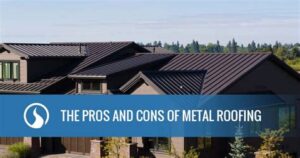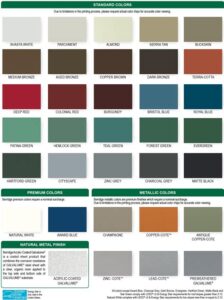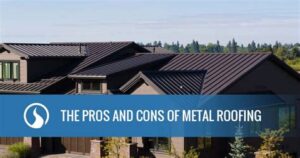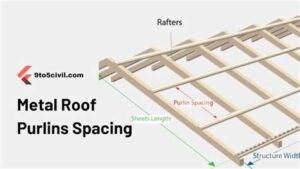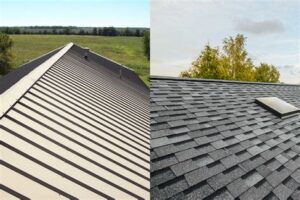When it comes to enhancing the longevity and performance of your metal roofing, understanding the significance of a drip edge is crucial. A metal roofing drip edge serves as a vital component, effectively directing water away from the roof and preventing potential damage to the underlying materials. This complete guide delves into everything you need to know about metal roofing drip edges—from the costs involved to their numerous benefits. By exploring factors that influence pricing and offering insightful calculations on return on investment, we aim to provide you with a comprehensive understanding of why a drip edge should be an integral part of your roofing project. Whether you’re a homeowner planning a new roof or a contractor seeking to inform your clients, this guide serves as an invaluable resource for making informed decisions.
Understanding Metal Roofing Drip Edge: What You Need To Know
Metal roofing drip edges play a crucial role in protecting your home from water damage and ensuring the longevity of your roofing system. They are installed along the edges of the roof and help direct water away from the underlying structure, preventing moisture infiltration and potential decay.
In the context of a complete roofing system, the drip edge is often seen as a minor component, but it serves significant functional purposes:
- It prevents water from seeping under the roof covering.
- It minimizes the risk of ice damming in colder climates.
- It provides a finished look to the roofing edges, enhancing aesthetics.
- It assists in proper drainage, which is essential for maintaining roof performance.
When considering the installation of a drip edge, it’s essential to choose the right materials and installation methods. The compatibility of the drip edge with the specific type of metal roofing is vital for achieving optimal performance.
Understanding the complete picture of drip edges also involves recognizing that they are available in various materials such as aluminum, galvanized steel, and copper, each offering distinct advantages. When budgeting for your roof, including the costs associated with drip edges is essential, as they contribute to the overall functionality and efficiency of the roofing system.
A metal roofing drip edge is an important, often overlooked element that significantly impacts the effectiveness and lifespan of your roof. Considering this when planning your roofing project can lead to better long-term results and satisfaction.
A Complete Overview Of Drip Edge Costs For Metal Roofing
When considering metal roofing, understanding the costs associated with drip edges is essential for homeowners. A complete breakdown of these costs can aid in budgeting and project planning. Below, we provide a comprehensive overview of the costs involved in installing a drip edge for metal roofing.
| Type of Drip Edge | Material Cost per Linear Foot | Installation Cost per Linear Foot | Total Cost (Materials + Installation) |
|---|---|---|---|
| Standard Aluminum | $1.50 | $2.00 | $3.50 |
| Steel | $2.00 | $2.50 | $4.50 |
| Vinyl | $1.00 | $1.50 | $2.50 |
| Metal with Coating | $2.50 | $3.00 | $5.50 |
In the table above, you can see the average costs associated with different types of drip edges. These figures can vary depending on local market rates and specific project requirements. Here are some additional factors that might influence the overall costs:
- Project Size: Larger roofs may benefit from lower material costs per square foot due to bulk purchasing.
- Accessibility: Roofs that are difficult to access might incur higher labor costs.
- Custom Work: Specially sized or shaped drip edges will have additional fabrication costs.
Analyzing these factors alongside the base costs can help homeowners gain a better understanding of the potential financial commitment involved in installing a drip edge with their metal roofing.
The Benefits Of Installing A Drip Edge For Your Metal Roof
Installing a drip edge on your metal roof offers an array of benefits that contribute not only to the longevity of your roofing system but also to the overall functionality and aesthetic appeal of your home. Here are the key advantages:
- Increased Water Protection: A drip edge acts as a barrier that directs water away from the fascia and into the gutters, preventing water accumulation and subsequent damage to your roofing materials.
- Enhanced Durability: By providing a protective edge, a drip edge minimizes the risk of wind-driven rain penetrating the seams of your roofing system, which can lead to premature wear and tear.
- Improved Aesthetics: A well-installed drip edge offers a finished look to your roof, enhancing the overall curb appeal of your property while maintaining a clean and polished appearance.
- Preventing Pest Intrusion: Drip edges can help prevent pests such as birds and rodents from entering your roof system, thereby reducing the chances of infestation and structural damage.
- Cost-Effective Maintenance: Investing in a drip edge reduces potential maintenance costs over time by safeguarding against water damage, thus ensuring your roof remains in optimal condition for years to come.
Understanding these benefits can help you recognize the importance of a drip edge in your roof’s installation process. It’s a small component that plays a vital role in providing long-term advantages, making it a critical aspect of your metal roofing project.
Factors That Influence Metal Roofing Drip Edge Pricing
When considering the costs associated with metal roofing drip edges, several key factors come into play that can significantly influence the overall pricing. Understanding these factors can help homeowners and contractors make informed decisions and ensure they get the best value for their investment. Here are some critical elements that determine the pricing of metal roofing drip edges:
- Material Quality: The type and quality of materials used for the drip edge can vary greatly. High-quality, durable metals such as aluminum or galvanized steel tend to cost more, but they offer better longevity and performance.
- Thickness of the Metal: Drip edges are available in various thicknesses. Thicker metal usually means higher costs, as it provides increased strength and resistance to bending or damage.
- Installation Complexity: The complexity of the installation process can also affect pricing. If additional framing or adjustments are needed to accommodate the drip edge, this can increase labor costs.
- Geographic Location: Prices may vary depending on local market rates. Different regions may have varying labor costs and material availability, influencing the overall expense associated with drip edges.
- Length and Size of the Roof: The total length of the drip edge required, based on the size and shape of the roof, can also impact costs. More extensive roofs will naturally require more materials and, consequently, a higher price.
- Design and Style Options: Custom designs or unique styles can add to the cost of metal roofing drip edges. Specialty finishes or decorative features can enhance the appearance, but they typically come at a premium price.
- Brand and Manufacturer: Different manufacturers may offer varying price points based on brand reputation and product standards. More established brands may charge higher prices for their reliability and quality assurances.
- Seasonality: The time of year can influence supply and demand, which in turn affects pricing. For instance, prices may rise during peak roofing season due to increased demand.
By considering these factors, homeowners can better navigate the pricing of metal roofing drip edges and make choices that align with their budgets and roofing needs.
How To Calculate The Return On Investment For Drip Edges
Calculating the return on investment (ROI) for installing drip edges on your metal roofing is essential to understanding both the financial and practical benefits of this often-overlooked component. Here’s how to approach it:
- Identify Installation Costs: Start by determining the total cost of purchasing and installing the drip edges. This includes materials and labor. For an accurate assessment, gather quotes from multiple contractors.
- Estimate Long-Term Savings: Drip edges help redirect water away from your roof and siding, preventing water damage, mold growth, and other costly repairs. Estimate potential savings from avoided damages over the lifespan of the roof, typically around 20-30 years.
- Consider Energy Efficiency: A metal roof with drip edges can enhance insulation and thus reduce energy bills. Calculate your annual energy savings to include in your ROI assessment.
- Factor in Home Value: Installations that improve the longevity and quality of your roof can increase the overall value of your home. Research local real estate trends to estimate how much additional value a new roof with drip edges might add.
- Calculate ROI: Use the formula: ROI = (Net Profit / Total Investment) x 100. Net Profit in this case is the sum of savings and increased home value minus the costs of installation.
By carefully analyzing these factors, you can gain a clearer picture of the A Complete financial impact of adding drip edges to your metal roofing. This will help you make an informed decision on whether the investment is worth it for your specific situation.
Frequently Asked Questions
What is a drip edge in metal roofing?
A drip edge is a metal flashing that is installed along the edges of a roof to direct water away from the roofing structure and into the gutters, preventing water damage and ensuring proper drainage.
What are the benefits of installing a drip edge?
Installing a drip edge offers several benefits, including protecting the underlying roofing materials from water damage, preventing roof rot, reducing ice dam formation, and improving the overall aesthetic appeal of the roof.
How does a drip edge affect metal roofing costs?
While there may be initial costs associated with installing a drip edge, it can lead to long-term savings by reducing water-related damages and the need for costly repairs, ultimately making metal roofing a more cost-effective solution.
Are there different types of drip edges for metal roofs?
Yes, there are various types of drip edges, including L-shaped, nosing, and flashing types, each designed to suit specific roofing styles and drainage needs.
What is the average cost of installing a metal roofing drip edge?
The average cost of installing a metal roofing drip edge typically ranges from $1 to $2 per linear foot, depending on materials and labor. This can vary based on the complexity of the roofing project and local pricing.
Can I install a drip edge myself, or should I hire a professional?
While DIY installation of a drip edge is possible for those with roofing experience, hiring a professional is recommended to ensure proper installation and to prevent any potential issues down the line.
What should I consider when choosing a drip edge for my metal roof?
When choosing a drip edge, consider factors such as material compatibility with your roofing type, local building codes, aesthetic preferences, and the specific drainage requirements of your roof.
